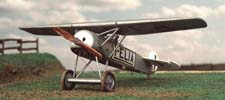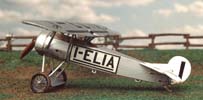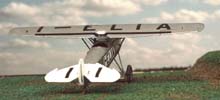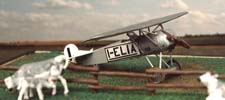 Hansa Brandenburg
W.29
Hansa Brandenburg
W.29
Based on the 1/72nd scale MPM kit, interiors were mostly scratchbuilt, with
the help of the etched-brass parts contained in the kit. Flying surfaces were
thinned down and the complex structure between fuselage, wing and floats was
scratchbuilt by means of Contrail lengths. Engine and pilot's guns are from
Aeroclub, while the observer's gun is a mix between Part etched-brass and
Roden's Parabellum. I used Mister Kit acrylics for finishing. Hexagons comes
from the kit' decal sheet, and were applied with the help of some coats of
Gunze Sangyo's Mister Mark.
W.29 2516 was the mount of Ltn. A.R.Haase and Ltn. der Reserve R.Bertram of
the Borkum Seeflugstation, 1918. I placed the model on a Fleischmann HO flat
railway-car, reproducing the system of transport used in the Zeebrugge Seeflugstation



